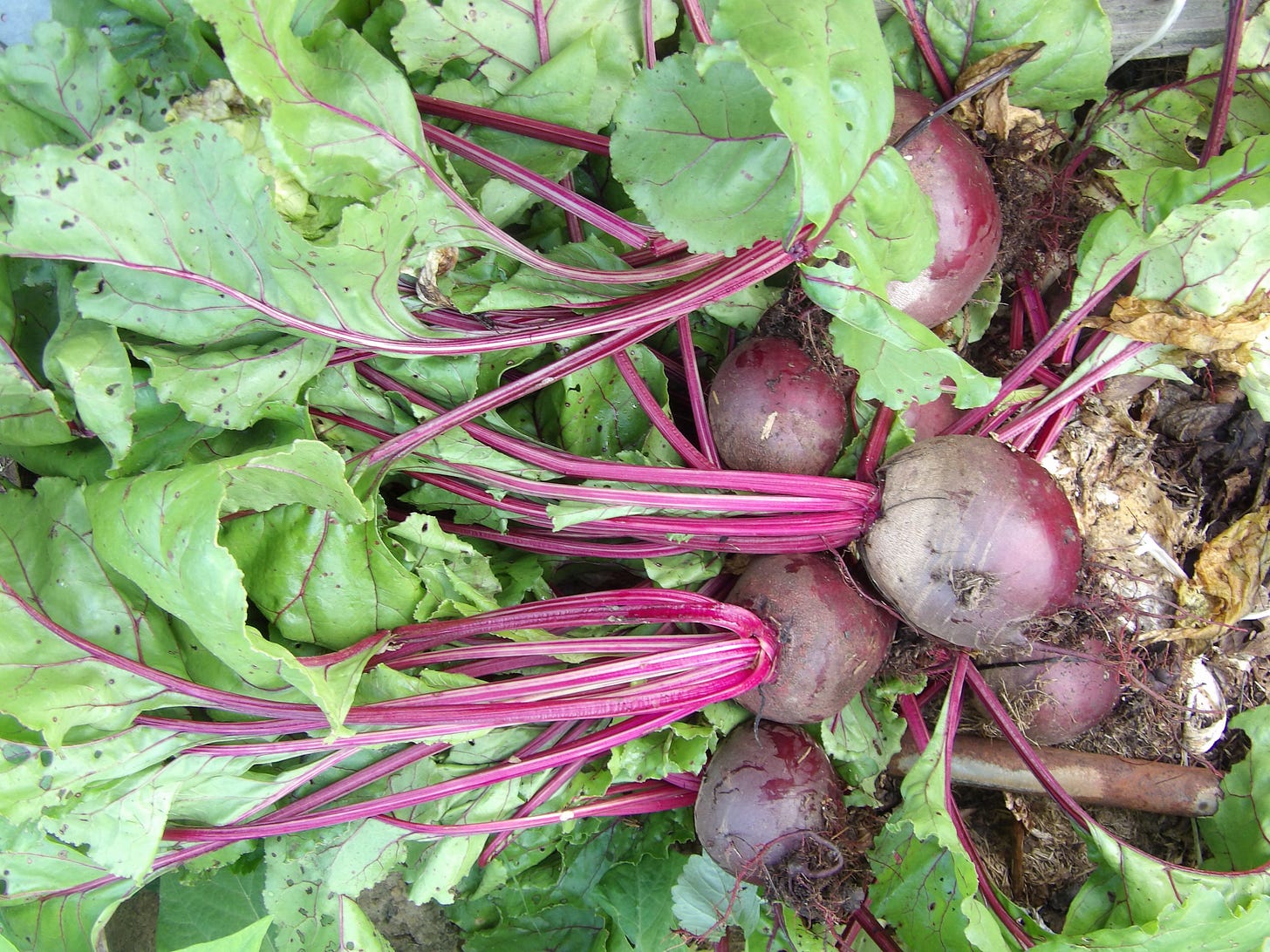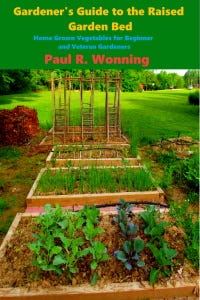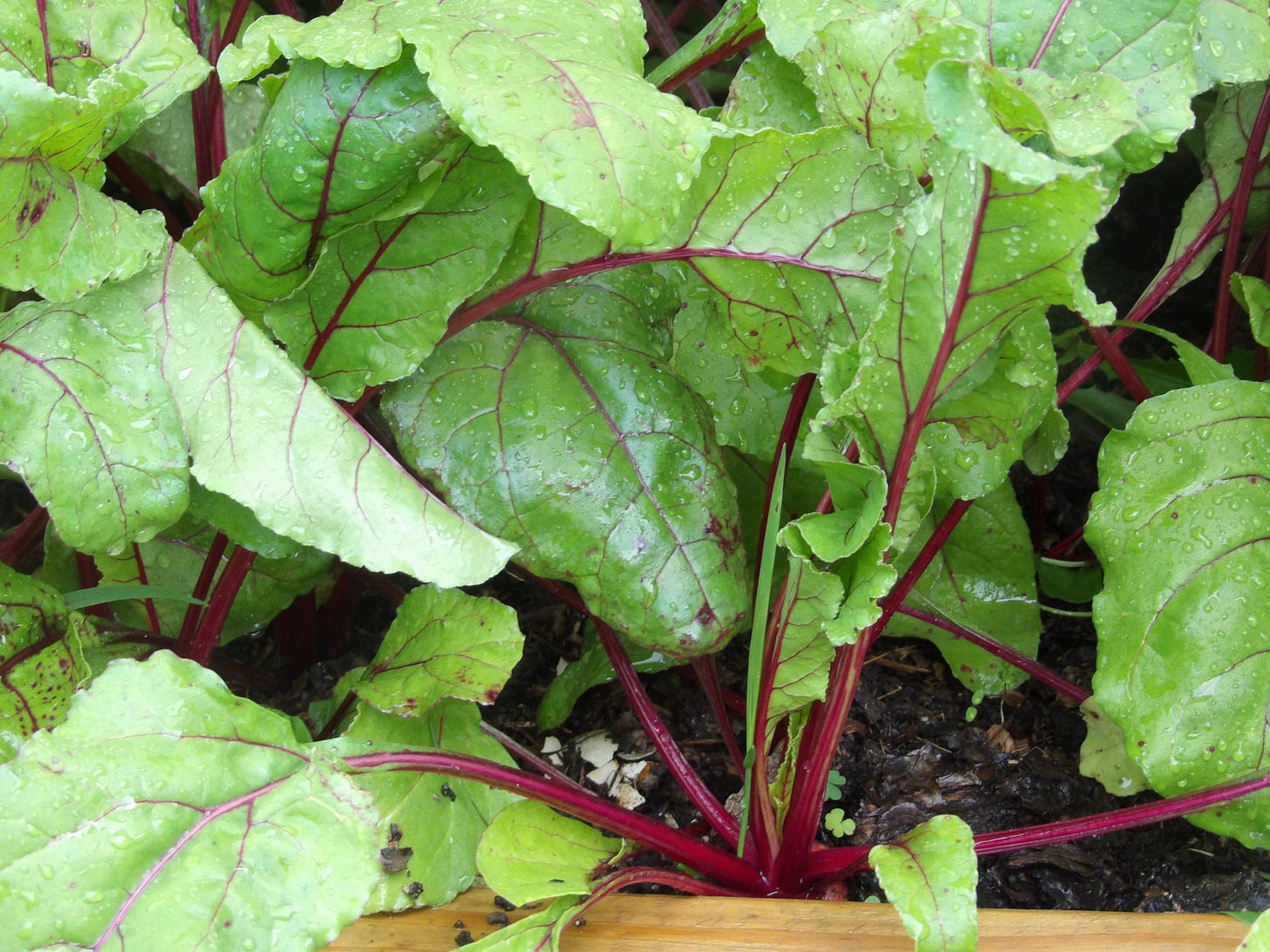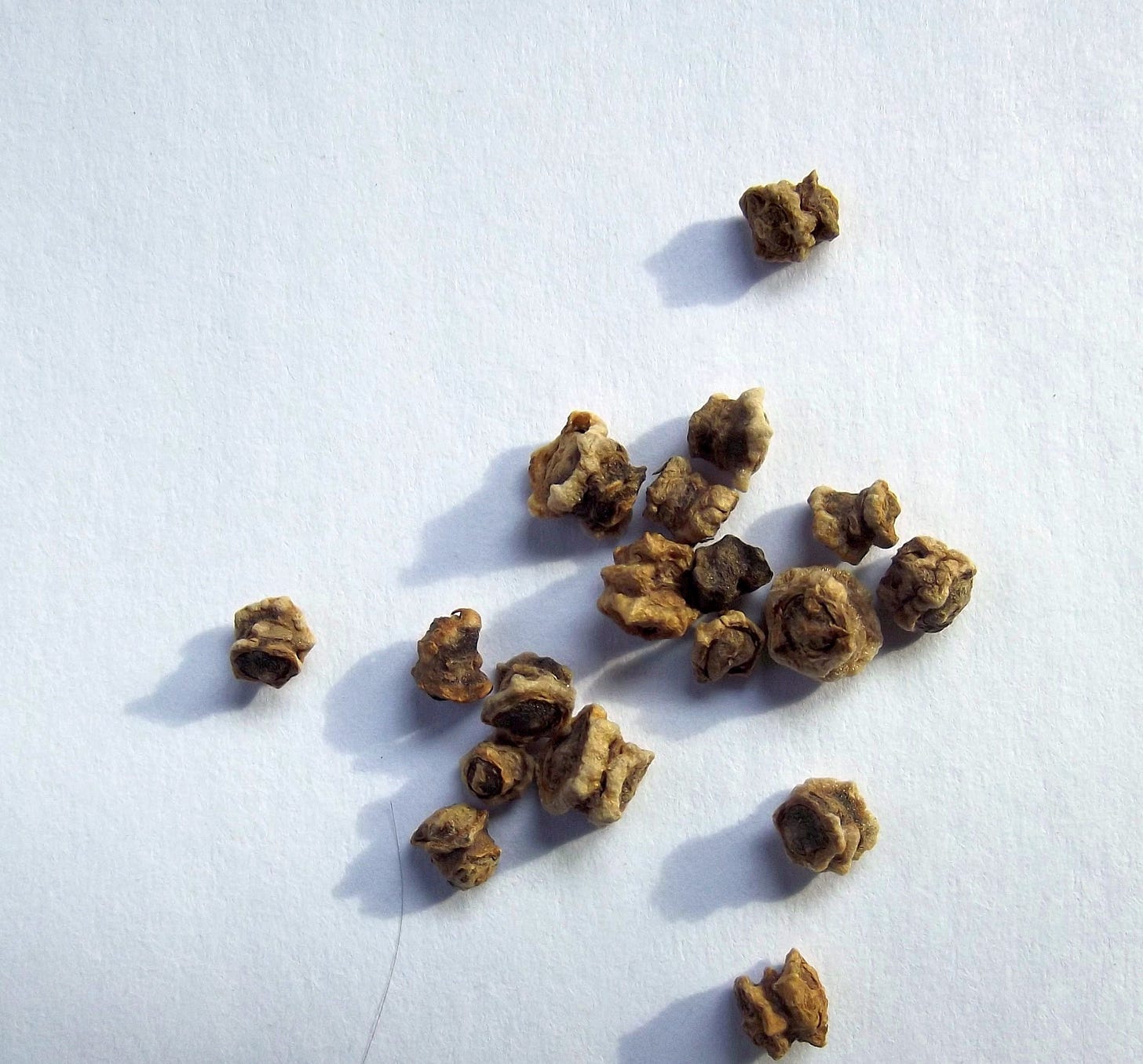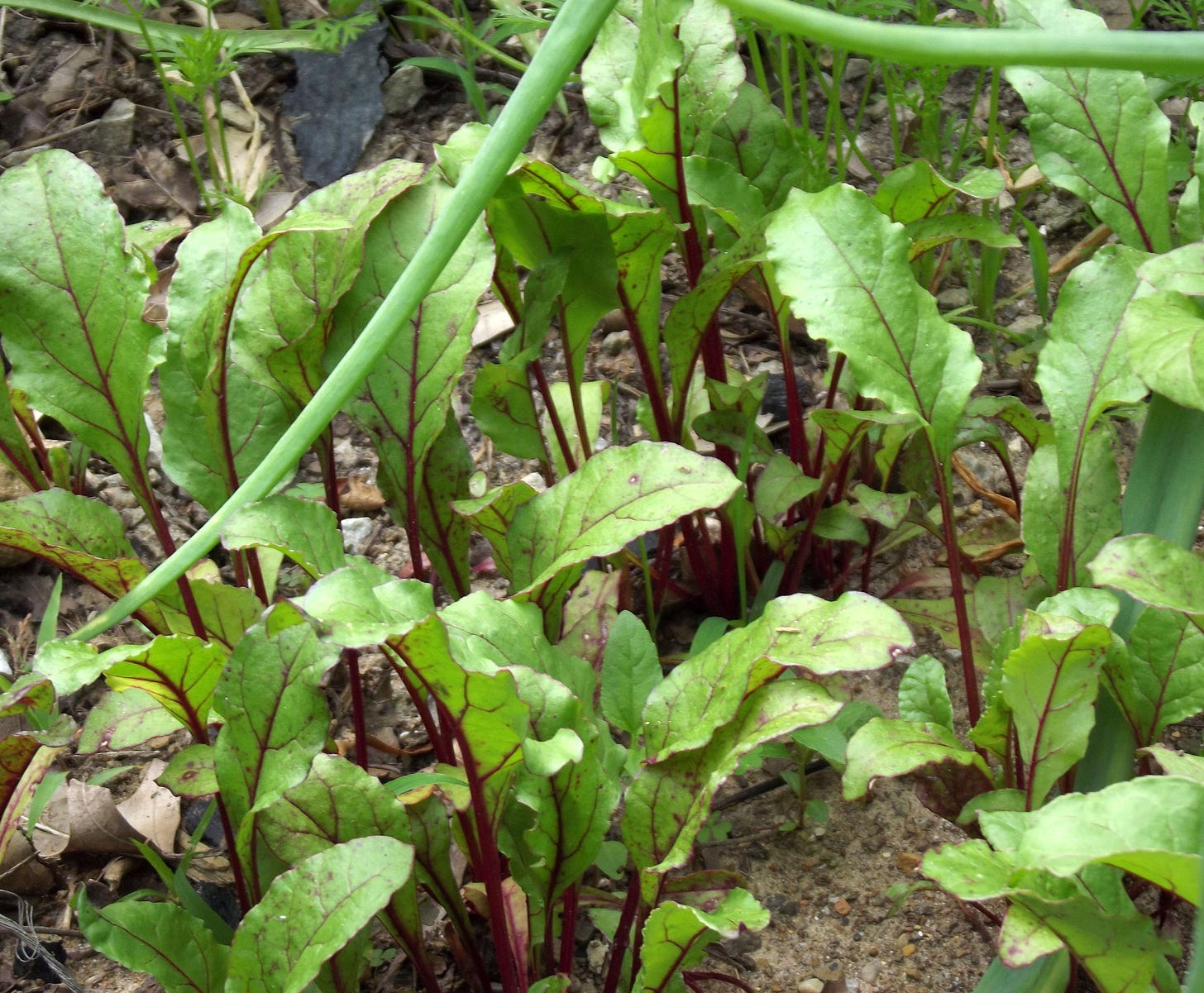Grow Beets for Good Health
Beets are a great addition to the vegetable garden, as they are easy to grow and can be eaten in a number of different ways. The beet is quite nutritious and consuming beets can lead to a number of health benefits.
Beet Family:
Chenopodiaceae, Amaranthaceae
Originally classified as a member of the goosefoot family, the beet has now been placed, along with all the members of the Chenopodiaceae family, in the Amaranthaceae family. The Amaranthaceae family contains about 165 genera and over two thousand species. Most of the species are either annual or perennial herbs, though there are a few shrubs and small trees. Gardeners seldom see the beet flower, but other members of this family appear as weeds or herbs in the garden. The flowers appear on an upright stalk along the stem. The curious gardener will need a hand lens to study the tiny, perfect flowers, which have two to five sepals and no petals. The seed is actually a cluster of seeds. Thus, two or more seedlings may appear where the gardener thinks they have sown only one seed. Members of this family include amaranth, beets, Swiss chard, lamb's quarters and spinach.
Beet Sun and Soil Needs
Beets like full to part sun and prefer a well cultivated, rock free, rich soil with a soil pH above 5.5 - 6. If beets show stunted growth it is a good indicator that soil PH is too high.
Beets are winter hardy to USDA Zone 6 with protection using either a row cover or a plastic tunnel.
Beet Origins and History:
The Romans and ancient Greeks cultivated the beet, consumed as a leaf crop. A relative of the chard, beet leaves are nutritious and tasty. Europeans didn't begin cultivating the beet for its root until the Germans or the Italians began consuming them in 1542. At first, the root resembled a parsnip, but has over the years evolved into its current form. Since it was one of the few crops that would produce a reliable winter crop, the northeastern Europeans soon came to regard it as a dietary staple. Berlin chemist Andreas Sigismund Marggraf developed a way to use beets to produce sucrose, or sugar. His protégé, Franz Achard, improved upon his methods, thus creating the sugar beet. The sugar beet produces about twenty percent of the sugar we use today. Since it is much less water dependent that sugar cane, the sugar beet is a favorite crop in Europe and arid countries.
Beet Propagation
Propagation of beets is by seed only. Sew the seed when soil temperatures reach 50 degrees Fahrenheit and above. Space the seeds about two inches apart in rows about a foot apart. Each "seed," is actually a cluster of two to three seeds, so they will need thinning when germination has occurred, which should take place in seven to ten days.
Beet Plant Height, Spread, Spacing:
Beets, depending upon the variety, will have a height of six to twelve inches. Thin the plants to about two inches apart in the row in rows about a foot apart. You use the thinned seedlings as an addition to a salad.
Beet Flower Color, Description and Fragrance:
The flowers arise on upright spikes of tiny flowers that can reach from three to six feet tall. The gardener will need a hand lens to examine the flower, which have two to five sepals and stamens. The number of stamens and sepals can vary between the varieties, but will always be the same for each variety. The perfect flowers produce a fine, usually yellow, pollen. Beets are biennial, which means they will flower the second year after planting.
Pollination:
Beets are wind pollinated and will cross easily with other varieties. For those wishing to collect their own seed, isolate the varieties at least five miles.
Plant Description:
The beet generally grows upright with a rosette of leaves emerging from a short stem located on top of the main root. The oval leaves range from eight to sixteen inches tall, depending upon the variety. The attractive green leaves have a red central vein with smaller veins of the same color radiating out from it. The beet is a biennial, producing flowers and seed the second season. Gardeners grow it as an annual, harvesting the bulbous red root for food.
Planting Seeds:
Plant beet seeds about two inches apart in rows about twelve inches apart. Beets will germinate in soil temperatures of 50 degrees Fahrenheit or more. By March or April beets can be planted in most of the United States. If planting in raised beds, the spacing between rows can be two to four inches. Cover the seeds with about one-half inch of soil. Keep the soil moist after planting to encourage germination. If soil conditions are dry, the gardener may soak the seed in water for twenty-four hours before planting. This will not be necessary most of the time.
Growing Seedlings:
Beet "seeds" are actually clusters of seeds of two to four to a cluster, so you will have to thin them after germination. Keep the seedlings moist for the first week or two after germination to allow the root system to develop. Then them when they are about two inches high. Pinch them off, rather than uprooting them. Uprooting them may disturb nearby seedlings. Thin to two to three inches between plants.
Garden Culture:
After germination, weed them frequently. Weeds can easily crowd them out, stealing nutrients and sunlight. Use the hoe sparingly to avoid damaging the roots. Keep them moist as they grow. Beets grow best during cool temperatures, so the early crops will probably yield best. Plant beet seed every two weeks during the summer to assure a continuous supply. Sow the fall crop about sixty days before the last frost. Sometimes beet roots will push themselves out of the ground, exposing them to sunlight. This can cause the roots to become tough. To prevent this, hill them or use compost or mulch to cover the roots. This will also cut down on weeds and help keep the ground moist. Beets can stand light frosts, so later crops can be harvested well into the fall. Fertilize the growing beets if necessary. Use seaweed extract or fish extract solution to water the plants once a week. Beets need a plentiful supply of phosphorus as they grow. Worm tea, if available, also serves as a good fertilizer.
Problems
Beets normally have few problems, however cabbage loopers, flea beetles and aphids can damage the plants.
Eating Beets
Beets can be eaten raw, roasted or boiled. Pickled beets make a delicious treat and dehydrated beet strips are a great addition to salads. Beet leaves can be added to salads and stir fry dishes. Raw beets provide the most nutritional benefit.
Nutrition
Beets are high in vitamins and minerals needed for good health. The folate content can help lower blood pressure and improve the body's performance. The fiber content can improve digestive function and the nitrates can help brain health.
Beets are easy to grow, take up little space in the garden and adding them to your diet can improve your overall health.
© 2023 Paul Wonning





